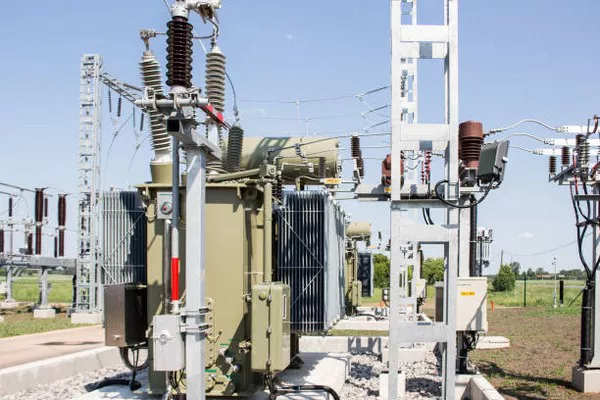In the complex and intricate web of power transmission infrastructure, transformers stand as silent sentinels, playing a pivotal role in ensuring the seamless delivery of electricity from power generation plants to end-users. These indispensable devices act as intermediaries, transforming voltage levels and facilitating efficient energy transmission across vast networks of power lines. In this article, we delve into the intricate workings of transformers on power lines, exploring their significance and the critical functions they perform.
Understanding Transformers:
At the heart of the power distribution network lie transformers, devices that manipulate the voltage of electricity as it journeys from power plants to homes, businesses, and industries. Transformers serve two primary functions: stepping up voltage for efficient long-distance transmission and stepping down voltage for safe and practical use at the consumer end.
Stepping Up Voltage:
One of the fundamental roles of transformers is to step up the voltage of electricity generated at power plants before it embarks on its long journey through power lines. This is essential for minimizing energy losses during transmission. According to Ohm’s Law, power loss is directly proportional to the square of the current and resistance, and inversely proportional to the voltage. By increasing voltage, transformers enable the transmission of electrical power over long distances with reduced current, subsequently lowering resistive losses and improving overall efficiency.
High-voltage transmission lines, often referred to as ‘grid highways,’ carry electricity from power generation stations to distribution substations across vast distances. These transmission lines operate at extremely high voltages, typically ranging from hundreds of thousands to millions of volts. Transformers strategically placed along these power lines step up the voltage, facilitating the efficient flow of electricity across the grid.
Stepping Down Voltage:
Once electricity reaches its destination, whether it be a residential area or an industrial facility, transformers at distribution substations step down the voltage to levels suitable for safe and practical use. Lower voltage levels reduce the risk of electrical accidents and allow for the diverse needs of end-users, from powering household appliances to operating machinery in industrial settings.
Distribution transformers, situated on poles or within substations, play a crucial role in shaping the final stage of the electricity delivery process. These transformers efficiently reduce the voltage, ensuring that the electricity supplied to homes and businesses meets the required safety standards and operational specifications of various electrical devices.
Ensuring Grid Stability:
Transformers also contribute significantly to maintaining the stability of the electrical grid. They act as buffers against voltage fluctuations and sudden surges, absorbing excess energy and preventing potential damage to the entire power distribution system. This is particularly crucial in the face of unpredictable events such as lightning strikes, equipment malfunctions, or sudden changes in power demand.
Smart Grid Integration:
As the global energy landscape evolves, there is a growing emphasis on the integration of smart grid technologies. Transformers are not exempt from this transformation, with the development of smart transformers that incorporate advanced monitoring and control capabilities. These intelligent devices enable real-time monitoring of the power grid, allowing operators to detect issues promptly, optimize energy flow, and implement preventive measures to enhance overall reliability.
Environmental Considerations:
Beyond their technical functions, transformers also play a role in environmental conservation. Energy losses during transmission, which transformers help mitigate, directly impact the overall efficiency of the power distribution system. By reducing these losses, transformers contribute to a more sustainable and eco-friendly energy infrastructure.
See Also How Transformers Increase Voltage? All You Need to Know
Conclusion:
In the intricate tapestry of the power distribution network, transformers emerge as unsung heroes, ensuring the reliable and efficient transmission of electricity from generation sources to end-users. Their ability to manipulate voltage levels not only facilitates long-distance transmission but also ensures that electricity reaches its final destination in a form that is safe, stable, and suited to the diverse needs of consumers.
As we continue to navigate the evolving landscape of energy production and consumption, transformers will undoubtedly play a central role in shaping the future of power distribution. With advancements in technology, the integration of smart grid solutions, and a renewed focus on sustainability, transformers are poised to become even more instrumental in building resilient and eco-conscious electrical infrastructures across the globe.

